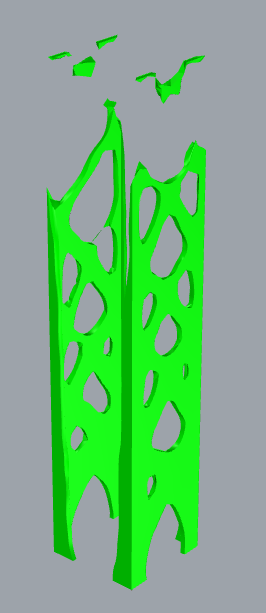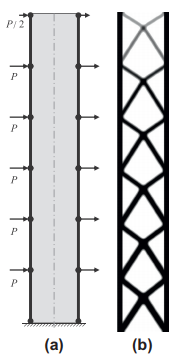Hello everyone!
I am working on a validation problem for a script I have set up previously to load in geometry and loading/material/optimization parameters from Rhino 3D and run through Hypermesh and Optistruct. I am currently trying to run a 'high-rise' type of problem - effectively this is a cantilever with point wind loads acting at several points up the height. With this type of loading, we would expect to see a symmetric brace pattern similar to the image I have shown below. What we are actually getting are results that are asymmetric and have material that is not attached to the rest of the structure. Is this because we are using a solid to mesh and solve? Or possibly because of the volume fraction selected?
I understand that mathematically, it is possible to have elements that do not seem 'connected' to the structure due to the way density is assigned along the continuum. However, I do not understand why we are seeing asymmetric bracing if we have symmetric geometry and loading. Has anyone encountered something like this before? And is there any documentation on the exact methodology employed in OptiStruct to arrive at solutions? I know the SIMP method is used, but I have not had much luck in finding more specific information. Any help or guidance would be greatly appreciated! I have attached the hypermesh model, results files and output, a screenshot of the final results at a density threshold of ~0.4, and an image showing the intended loading and results.
<?xml version="1.0" encoding="UTF-8"?>
<?xml version="1.0" encoding="UTF-8"?>
Unable to find an attachment - read this blog